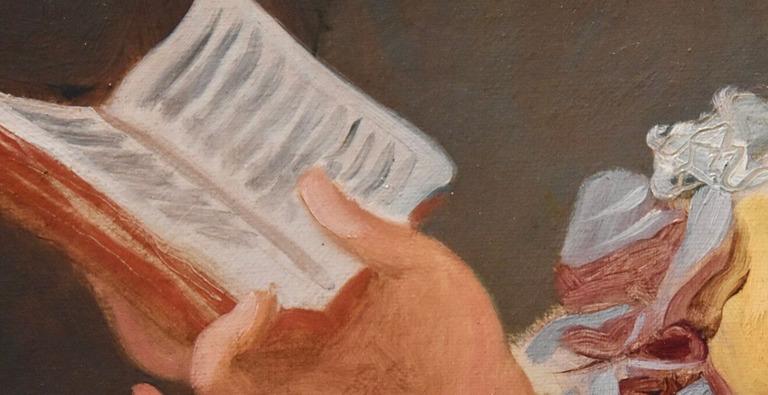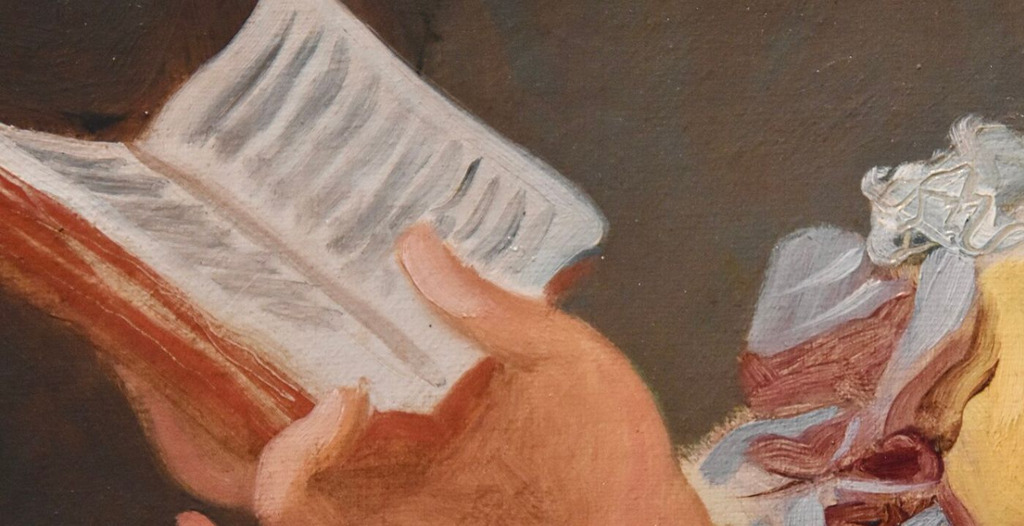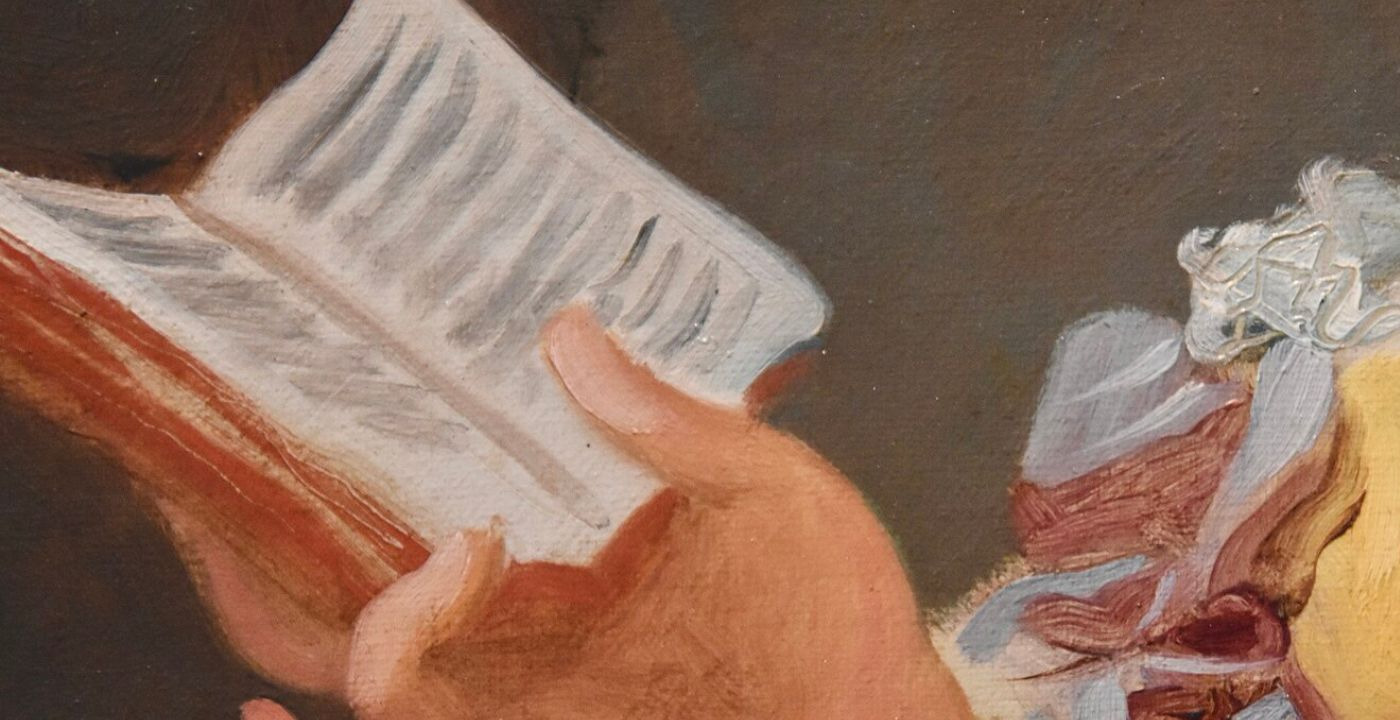Birth
ca. 1765-1766
Education
Day School, AutodidacticDeath
Late February 1825, in her house in Church Street, Islington
Religion
Baptist, UnitarianElizabeth Hays Lanfear was a novelist, a contributing writer to Mary Hays's Letters and Essay, Moral, and Miscellaneous (1793), sister of Mary Hays, and one of the first two women novelists in England to have been immersed from birth in the culture of religious Dissent. Like Mary Hays, she became a Unitarian.
Personal Information
Name(s)
Elizabeth Hays Lanfear
Date and place of birth
1765/66 (she died in February 1825 in her 59th year), spending her childhood first in a house along Shad Thames and then nearby at 5 Gainsford Street, Southwark, adjacent to her father’s warehouses along the wharves of Jamaica Row.
Death and place of death
Late February 1825, in her house in Church Street, Islington; buried in St. Mary’s Parish Churchyard, Upper Street, Islington, February 25, 1825, exactly 18 years to the day before her sister Mary Hays’s burial; will proved July 21, 1825 (National Archives, PROB 11/1701/344).
Family
Mother: Elizabeth Judge Hays (c. 1730-1812); after her husband’s death in 1774, she maintained a wine business from her Gainsford Street home for many years; her will was proved January 28, 1813 (PROB 11/1540/448).
Father: John Hays (October 13, 1729-April 1774), St. Thomas’s Chapel (Presbyterian), Southwark; he was primarily a ship’s captain, but by the late 1760s he appeared to be working along the Southwark wharves with the Dunkin family as corn factors (for his will, see National Archives, PROB 11/997).
Marriage and Family Life
Elizabeth Hays Lanfear had four sisters and two brothers – Joanna Hays Dunkin (1754-1805), Sarah Hays Hills (c. 1755-1836), Mary Hays (1759-1843), Marianna Hays Palmer (1773-1797), John Hays (1768-1862), and Thomas Hays (1772-1856). Elizabeth was Mary Hays’s favorite sister; they were inseparable until the former’s marriage to Ambrose Lanfear (c. 1750-1809) on March 14, 1804. The Lanfears settled at 4 Upper Terrace, Islington; after her husband’s suicide in 1809, she moved to Church Street, Islington, where she remained the rest of her life. She gave birth to two sons—John Hays Lanfear (1805-17) and Francis Lanfear (1806-1830)—and assisted in raising her two stepsons, Ambrose Lanfear, Jr. (1787-1870) and Joseph Lanfear (b. 1795). Mary Hays lived nearby in Park Street, Islington, between 1806 and early 1809, and c. 1819-21 in Cross Street, a short walk from Elizabeth and their older sister, Sarah Hays Hills, who lived in Felix Terrace, c. 1813-26, and a niece, Emma Dunkin Hills, who lived in Canonbury Square, 1810-26.
Education
Elizabeth Hays may have received a day-school education after the family settled in Gainsford Street, but by the time of the Mary Hays-John Eccles correspondence (1779-80), Elizabeth was living at home. She and her sister Mary appear to have been largely autodidacts in terms of education.
Religion
Elizabeth was raised a Particular Baptist in the Gainsford Street Chapel, Blackfields. She joined her sister, Mary, in becoming a Unitarian in the early 1790s and remained so thereafter; a devout Dissenter, she joined the congregation at Newington Green (where Mary Wollstonecraft and Anna Letitia Barbauld had also worshiped) in 1818.
Transformation(s)
One significant transformation was her conversion, along with her sister Mary, from the Calvinism of the Particular Baptists in which she was raised to Unitarianism by the early 1790s. She decided to become a novelist in the mid-1790s through the influence of her sister, Mary, and their mutual friends, Mary Wollstonecraft, Eliza Fenwick, and Amelia Alderson.
Contemporaneous Network(s)
Elizabeth Hays knew the daughters of Robert Robinson in the late 1780s and moved in the Godwin-Wollstonecraft circle in the 1790s. She remained friends with Henry Crabb Robinson, George Dyer, and other Dissenting figures of the Romantic period, several of whom subscribed to her novel in 1819. Her circle was enlarged during her years in Islington by her connections with various members of the Wedd, Francis, Dunkin, Hays, and Lanfear families, and her membership in 1818 of the important Unitarian congregation meeting at Newington Green. References to Elizabeth Hays Lanfear are not present in any formal biographies of early 19th century women, but she can be found in the correspondence of Mary Hays, Eliza Fenwick, George Dyer, and the diary of Crabb Robinson.
less
Significance
Works/Agency
Elizabeth Hays contributed two chapters to Mary Hays’s Letters and Essay, Moral, and Miscellaneous (1793):
No. X. “Cleora, or the Misery attending unsuitable Connections” (124-38).
No. XI. “Josepha, or the Pernicious Effects of Early Indulgence” (138-59).
Fatal Errors; or, Poor Mary-Anne, a Tale of the Last Century (composed c. 1796-97). London: A. J. Valpy, [1819] [Republished by Routledge in 2019, eds. Timothy Whelan and Felicity James.]
Letters to Young Ladies on Their Entrance into the World; to which are added Sketches from Real Life. J. Robins and Co., 1824; 2nd ed. 1828.
Reputation
Though she composed her novel Fatal Errors in the shadow of her sister Mary and the other women writers in William Godwin’s circle c. 1796-97 (Wollstonecraft, Fenwick, Inchbald, Robinson, and Alderson), Elizabeth Hays did not publish the novel until 1819, when urged by her niece Emma Hills. Her novel was critiqued in manuscript by Wollstonecraft and was later commented upon by some of Mary Hays’s friends (the novel might have been known to A. F. Wedd as well). Publishing the novel under her married name, however, dissevered her from her 1790s connections, leaving her identity as author (“E. Lanfear”) lost to posterity until 2016. With the republication of Fatal Errors in 2019, coupled with recent attention upon her conduct book Letters to Young Ladies (1824), Elizabeth Hays Lanfear emerges as an important writer in her own right and a legitimate member of the 1790s circle of Jacobin novelists and early 19th century writers of conduct literature.
Legacy and Influence
Fatal Errors establishes Lanfear as an important figure within the Godwin-Wollstonecraft circle in the 1790s, joining her sister as the first two women novelists in England to have been immersed from birth in the culture of religious Dissent. Fatal Errors belongs with Memoirs of Emma Courtney, Secresy, Nature and Art, Walsingham, and Maria: Or, The Wrongs of Woman as exemplars of early feminist novels and cautionary tales about the consequences of decisions made and situations endured by women in matters of love and marriage, decisions that too often left them bound to a state of financial dependence and social isolation. Lanfear’s place within conduct literature has previously been noted, but without any attribution to her as the sister of Mary Hays.
less
Controversies
Controversy
Her inclusion within the Godwin-Wollstonecraft circle and the subsequent criticism it received after 1798 may have led Elizabeth Hays to refrain from publishing her novel until 1819.
New and unfolding information and/or interpretations
The discovery of her novel Fatal Errors (1819) and her identification with Letters for Young Ladies (1824) place Lanfear for the first time within the Wollstonecraft circle of writers in the late 1790s and the popular movement of women writers of conduct literature post-1800. Unfolding genealogical research on Mary and Elizabeth Hays, such as the recent discoveries of the identity of their youngest sister, Marianna, and their familial connection to Matilda Mary Hays, enhances the perspective of their literary and social lives.
less
Bibliography
Primary (selected):
Three letters by Elizabeth Hays to Mary Hays, 1796, 1801, and 1803, Misc. Ms. 4075-77, Carl H. Pforzheimer Collection of Shelley and his Circle, The New York Public Library, Astor, Lenox and Tilden Foundations.
George Dyer, Overbury, near Tewkesbury, to [Messrs Vernor and Hood], undated [c. 1805-1806], MS. Montagu d. 4, f. 190, Bodleian Library, Oxford. Discusses Lanfear and her periodical writings sent out as “E.L.”
Numerous references can be found in the letters of Eliza Fenwick to Mary Hays, Fenwick Family Papers, New York Historical Society; and in the diary of Henry Crabb Robinson, Crabb Robinson Archive, Dr. Williams’s Library, London.
Secondary (selected):
Timothy Whelan, “Elizabeth Hays and the 1790s Feminist Novel.” The Wordsworth Circle 48.3 (2017): 137-51.
Lanfear, Elizabeth. Fatal Errors; or, Poor Mary-Anne, a Tale of the Last Century, ed. Timothy Whelan and Felicity James. London: Routledge, 2019.
Web resources (selected):
“Lanfear, Elizabeth Hays.” Nonconformist Women Writers, 1650-1850. https://sites.google.com/view/nonconformist-women-writers/nonconformist-women-writers-1650-1850
Issues with the sources
Numerous copies of Letters for Young Ladies can be found world-wide, though no entry has ever properly identified the author beyond the name “Elizabeth Lanfear” or “Mrs. Lanfear,” thus leaving her connection with her sister and their coterie of women writers, as well as her niece Matilda Mary Hays, unknown. Only one copy of Fatal Errors has been found to date, and that belongs to the British Library (shelfmark C.186.b.7). All references to Lanfear in the letters of Eliza Fenwick were unfortunately excised by A. F. Wedd in her 1927 edition, The Fate of the Fenwicks, as were references to her in Edith Morley’s 1938 three-volume edition, Henry Crabb Robinson on Books and their Writers.



Comment
Your message was sent successfully